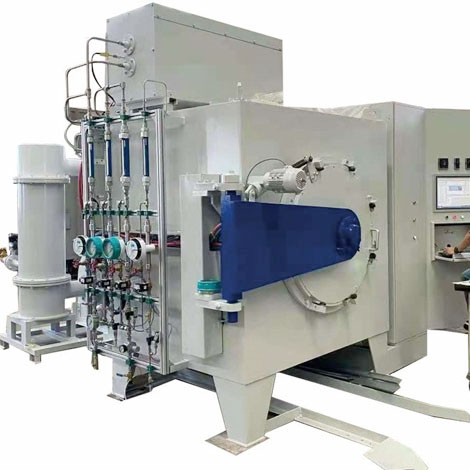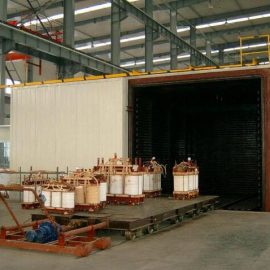Nitriding Process Specification And Operation
Determination of process specifications:
1. Nitriding temperature
1) Commonly used at 500~530℃, it can ensure that the nitride has a larger dispersion and the highest hardness
2) As the nitriding temperature increases, the depth of the nitriding layer increases, while the hardness decreases significantly. When nitriding is greater than 550 °C, the maximum hardness of most steel grades is lower than 1000HV
3) When two-stage or three-stage nitriding is used, the temperature of the second stage is often lower than 560℃
2. Nitriding time
1) The nitriding layer thickens with the prolongation of nitriding time. The initial growth rate is large, and then gradually slows down, following the parabolic law, and the general penetration rate is about 0.01mm/h
2) As the holding time prolongs, the nitrides aggregate and grow, and the hardness decreases. The higher the temperature, the longer the time, the greater the growth
3. Ammonia decomposition rate
1) The ammonia decomposition rate is better controlled at 25%~40%, the active nitrogen atoms are the most, and the surface of the parts absorbs a large amount of nitrogen
2) The decomposition rate of ammonia exceeds 60%, and the volume fraction of hydrogen in the atmosphere reaches 52%, resulting in denitrification. A large number of nitrogen molecules and hydrogen molecules are stagnant on the surface of the parts, so that nitrogen atoms are not absorbed, and the infiltration layer is thinned
3) One-stage or two-stage nitriding, the decomposition rate of strong ammonia is 18%~30%, and the decomposition rate of ammonia during diffusion is ideally 40%~60%
Nitriding operation:
1. Heating: Before heating, the ammonia gas should be exhausted, and the ammonia gas flow rate is more than 2 times of the normal flow rate. If the deformation requirements are strict, step heating should be adopted, and the temperature should be kept at 200~250°C and 400~450°C for 1~2h each. Make the heating rate less than 50℃/h. When approaching the holding time, the amount of ammonia should be increased to control the decomposition rate to the lower limit of the process requirements.
2. Exhaust: Generally, exhaust while heating up, and empty at 150~200°C. During the exhaust process, you can use pH test paper (soak the test paper with water, it turns blue when it encounters ammonia gas) or glass rod (glass rod is dipped in salt and exposed to salt) Ammonia gas has white smoke discharged) method to check the sealing condition of furnace tank and pipeline
In the exhaust stage, ammonia gas is continuously introduced to make the furnace gas pressure reach 200~400Pa. Since ammonia gas is easily soluble in water, oil is usually placed in the U-shaped tube for measuring the ammonia decomposition rate. In the nitriding tank, the air does not work, and the exhaust pipe cannot be ignited. The ammonia decomposition rate can reach 70% in the heating stage. When the volume fraction of ammonia in the furnace gas is greater than 95%, the ammonia flow can be reduced, and the positive temperature in the furnace can be maintained. pressure
3. Heat preservation: When the temperature reaches the specified temperature of the process, adjust the ammonia flow to control the ammonia decomposition rate to 18%~35%, and start to calculate the heat preservation time. At this time, the furnace pressure is 200~600Pa. During the nitriding process, the ammonia The ammonia decomposition rate is controlled by the flow rate method. Generally, the ammonia decomposition rate is measured every 15~30 minutes. During the heat preservation process, the upper and lower deviation of the furnace temperature should be less than 5 °C. necessary analysis
4. Denitrogenation cooling: After the entire nitriding stage, close the exhaust valve, reduce the ammonia flow, and keep the temperature for 2 hours, so that the ammonia decomposition rate is greater than 70%, so that the nitrogen concentration on the surface of the parts is reduced, and the surface brittleness is reduced. After the power outage to cool down, continue to pass a small amount of ammonia gas into the furnace to keep the furnace at positive pressure. When the furnace temperature drops below 150 °C, the supply of ammonia can be stopped and the parts should be released from the furnace to avoid collision.

Cementation, Nitriding And Carbonitriding Process Vacuum Pressure Impregnation Process For Dry Type Transformer Effect of Annealing Process on Soft Magnetic Properties of FeSiBCuNb Alloys


Contact us
Your email address will not be published. Required fields are marked *